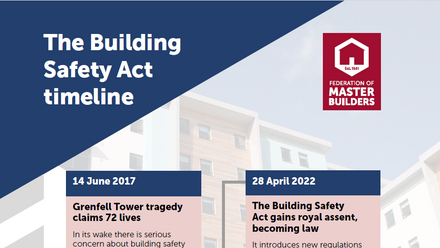What’s changed and how will you be affected?
Significant changes to building regulations came into effect on 15 June 2022. The changes were aimed at improving the energy efficiency of buildings to help the country move towards its targets for Net Zero by 2050. Essentially, what this means is Government wants to reduce our current carbon emissions and with construction being a major contributor, it must play its part. Further changes will be coming in 2025 to make buildings more energy efficient, but these measures are a stop-gap until then.
Why are these changes happening?
The new building regulations are a stop-gap measure to improve energy efficiency in housing regulations ahead of the Future Homes and Buildings Standards introduction in 2025, which will require more significant cuts to carbon emissions. The aim of these measures is to make the changes in 2025 less severe for builders and also to help cut carbon emissions in the meantime.
What are the changes?
These are changes to building regulations in England for new homes, extensions, existing buildings and non-domestic buildings in June 2022. These measures make it mandatory to cut carbon emissions in new homes by 30% and 27% in the other types of work listed above. These changes mean you must now comply with the new measures and it’s your responsibility to know how they may affect the work you’re doing.
What parts of the building regulations are affected?
The changes to improve energy efficiency in buildings and the systems to support this are in new Approved Documents L, F and O. These documents will reflect the new requirements that buildings must adhere to support the improvements to lower carbon emissions. In simple terms:
- part L looks at the energy efficiency of properties;
- part F will look to improve ventilation;
- part O looks to ensure buildings don’t overheat; and
- new Approved Document S has been introduced, covering how a building includes infrastructure for electric vehicles. From June all new homes will have to have charging points for electric vehicles.
Guidance on ways to meet the building regulations can be found in the Approved Documents area on the GOV.UK website.
What if my building is currently in the planning process?
If a building notice, initial notice, or full plans are submitted before 15 June 2022, they will still be considered under the previous regulations, provided building work starts before 15 June 2023. For new housing developments that gained planning permission under the old regulations, work must have been started on a unit by 15 June 2023 or the new regulations will apply.
For work that falls under these new regulations, but are not subject to notices or applications, there are no transitional arrangements. This means the new rules must be followed from 15 June 2022.
What happens if I don’t follow building regulations?
If you don’t follow building regulations, your local authority may serve you with an enforcement notice and legal action may be taken.
Find out more
You can view more information on the new Building Regulation changes in our downloadable pdf guide or watch our 60 minute webinar 'Is your business prepared for Building Regulations changes in June 2022?' on demand.
If you have any questions please speak to our policy team on 020 7025 2934 or email us on [email protected].




